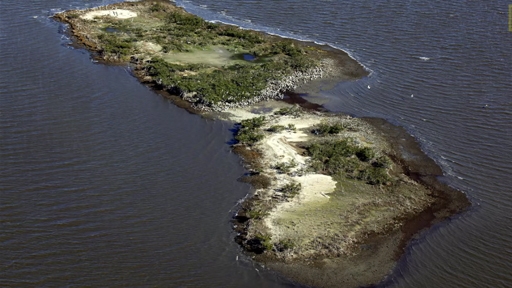
Before the spill
Cat Island, once one of the largest nesting grounds for birds in Louisiana, has been literally disintegrating in the years following the Gulf Oil Spill.
Islands like this are often held together only by the elaborate root systems of the plants that thrive on them. The roots act like glue to anchor the sediment in place and keep it from eroding away.
During the Gulf Oil Spill in 2010, nearly 200 million gallons of crude oil flowed relentlessly into the Gulf of Mexico. Countless coastal islands were smothered, including this formerly pristine 6-acre paradise known as Cat Island. Drenched in oil, nearly all of the mangroves and accompanying roots died. Without roots for stability, this island has been washing away little by little every day since.
What’s worse, hundreds of thousands of migratory birds have relied on this island to breed and raise their chicks for generations. When chicks are born, they “imprint” to the island, meaning they come back to the same place when they are themselves ready to breed and raise chicks. If they return to the island to find nothing, they don’t breed somewhere else, they stop breeding altogether. This means that we’re losing exponential generations of migratory birds, some of them rare and endangered.

Brown pelican and hatchling image by U.S. Fish and Wildlife Service
The Executive Director of Audubon Louisiana stated, “It really is, in a way, the canary in the coal mine for the habitats that are going to be threatened in the next couple decades.”
The good news? Efforts are being made to restore the island by bringing mangroves and sediment back, and to clean up the oil that remains. Our coasts need all the help they can get. For practical ways to contribute, join the efforts of The Ocean Conservancy on Facebook!
See the full story of Cat Island with insight from scientists here:






